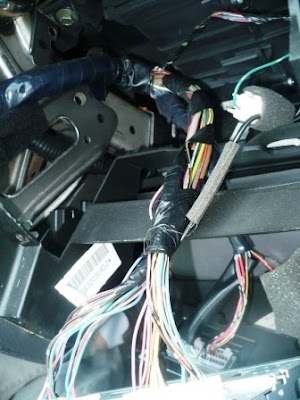But there's actually another choice...a media server! Join me as I walk you through this exciting world! And use an exclamation point for three sentences in a row! This is the fourth and final chapter in this OTA adventure, so in case you missed what has been covered so far, here's a recap:
Chapter 1 - Receive HD channels on your TV with an over-the-air (OTA) antenna
Chapter 2 - Optimize the antenna signal for all TVs with splitters
Chapter 3 - Run an antenna's signal on the same cord as your Internet feed
Chapter 4 - Stream videos from cable stations with a media server
Your streaming media setup will look something like this.
Media Server Concepts
A media server takes many forms; in our case I'm referring to a device that provides a more comfortable experience (interface) to watch online movies and TV shows on your TV. A media server visits streaming media web sites, pulls their content in, and displays the content in an interface on your TV that's easier to navigate.
Still having trouble understanding? That's okay. Put it this way, you could either visit the local farmer's garden for fruits and vegetables, the butcher for your meat, and the five-and-dime shop for your cereal, or go to the supermarket that pulls all of these together and presents them more conveniently. You guessed it, the supermarket is a media server.
Popular streaming media sites include YouTube, Hulu, and Netflix. Hulu streams network and cable programming with "limited commercial interruption" they're quick to point out. Hulu's basic service is free, but for a little less than $10/month, you get access to more shows and they're available sooner than basic users. A monthly subscription of $7.99/month is required for Netflix's streaming service. These sites work like YouTube except they offer different programming.
To watch streaming media from you computer, just point your browser to these sites, pick your show, and press play. Let's say for the purpose of this post that you'd rather watch streaming media from your couch.
Streaming Media Access
In addition to visiting Hulu, Netflix, and YouTube for entertainment, all networks (CBS, NBC, FOX, and ABC) and many cable channels offer most of their shows on their web sites by navigating to their "view this show here" links to watch what you want for free.
I have a monthly subscription to Netflix streaming and have been very pleased with its performance. I'm able to view Netflix content at my computer, or sitting on the couch via my TiVo, PS3, or Wii. I prefer the PS3 because its Netflix interface is smooth and responsive. It's great watching entire seasons of programming without commercials.
Cable channels that already require a separate subscription like HBO (whose streaming service is called HBOGO), and a selection of ESPN's live programming require you to verify that you already pay for those channels (which you don't if you cut the cord). You won't get to watch HBO or every game on ESPN, but let me remind you that it shouldn't stop you if you have a sight line into your friend's living room. Amazon also offers a streaming service that requires a subscription, but it's free for Prime members.
Media Server Choices - Just Your TV
Some of today's HDTVs are well connected to the Internet and may already offer improved interfaces for selected streaming sites like Hulu, Netflix, and YouTube. If that's the case, by all means go ahead and watch away by following your TV's instructions. If not, let's keep going and talk trash about those fancy TV owners. Such showoffs, they are!
Media Server Choices - Roku, Apple TV, Google TV, Netgear NTV300, and Boxee Box --> TV
These are names of boxes, about the size of your digital camera, that connect to your Internet router to pull streaming media and then display it in the user-friendly way I've been promising. My media server setup does not involve any of these devices. If you want more information about them, visit a site like
Another option is to use your computer as a media server device. The software uses your computer to take your Internet feed, grab the latest online offerings, and make them available on a variety of devices connected to your home network. From there you use that device, such as a PS3, XBox, or Wii, and watch the online offerings on your TV.
According to this Wikipedia page, there are tons of media server software choices. I'm not going to compare them here, but I will tell you that most will require you to pay for their services at a monthly, yearly, or one-time lifetime cost. Provided your computer handles streaming media well already, this software should run fine.
For my setup, I have been pleased with the performance of PlayOn for my media server software needs. After installing it on my computer with a lifetime subscription, I simply boot up my computer which runs PlayOn from the start, turn on my PS3 and TV, and I'm off and watching. PlayOn offers tons of content, improves the software regularly, and works seamlessly with major home devices.
Peace and Tranquility
No longer viewing cable TV's content was tough at first, but then something funny happened...I found that life did go on without its filler programming. I still watch the same amount of TV, but instead I feed my viewing needs with other, cheaper, sources of TV entertainment. I pay a monthly subscription for Internet access (which I'd have anyway) and Netflix and have paid in full for the OTA antenna and PlayOn software. My monthly cost is still a fraction of what it was to be entertained and I don't have to deal with poor cable TV billing practices.
I hope these four rambling posts have caused you to at least consider cutting the cord and joining the revolution.

































